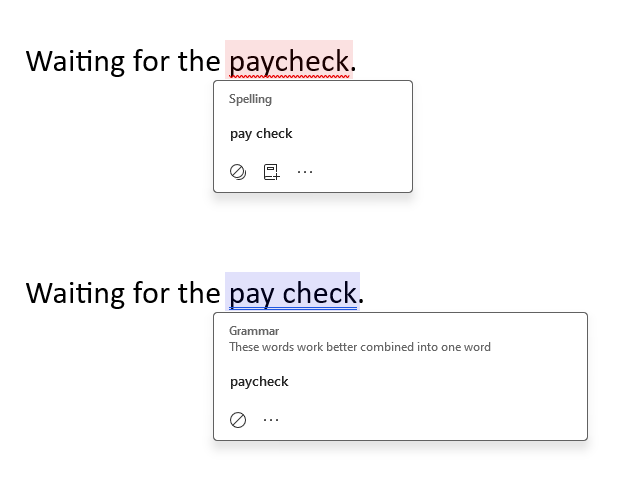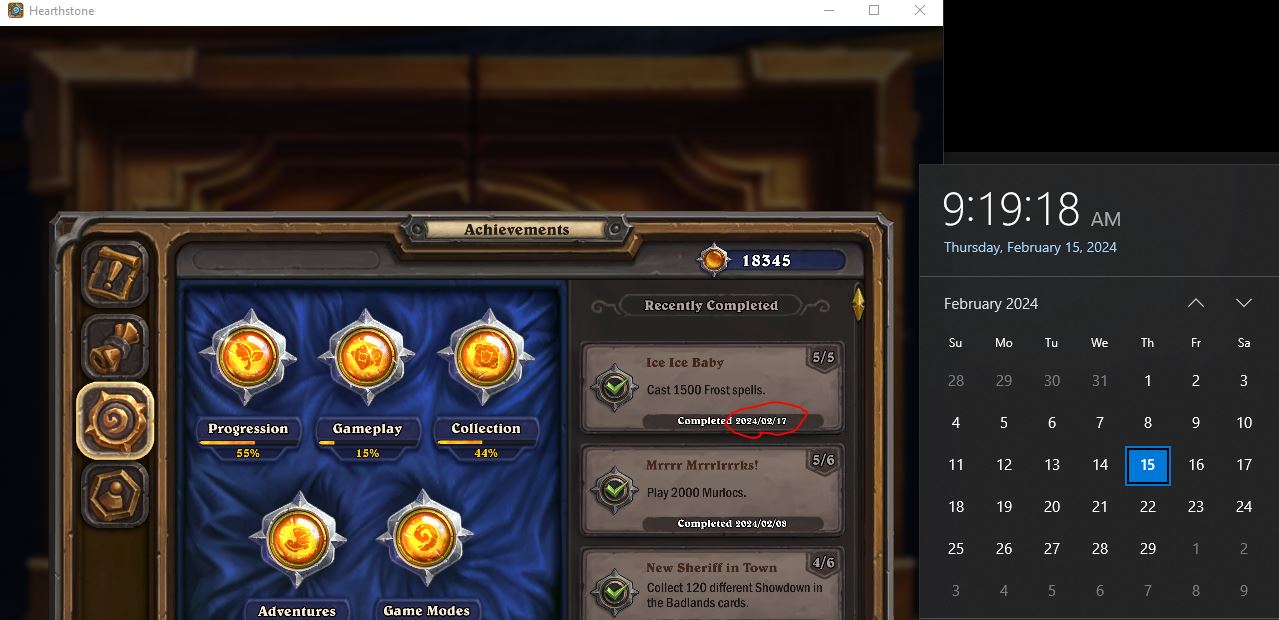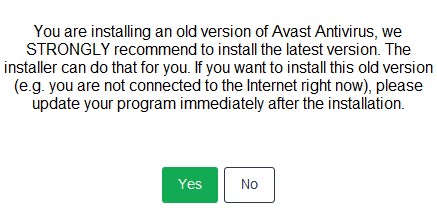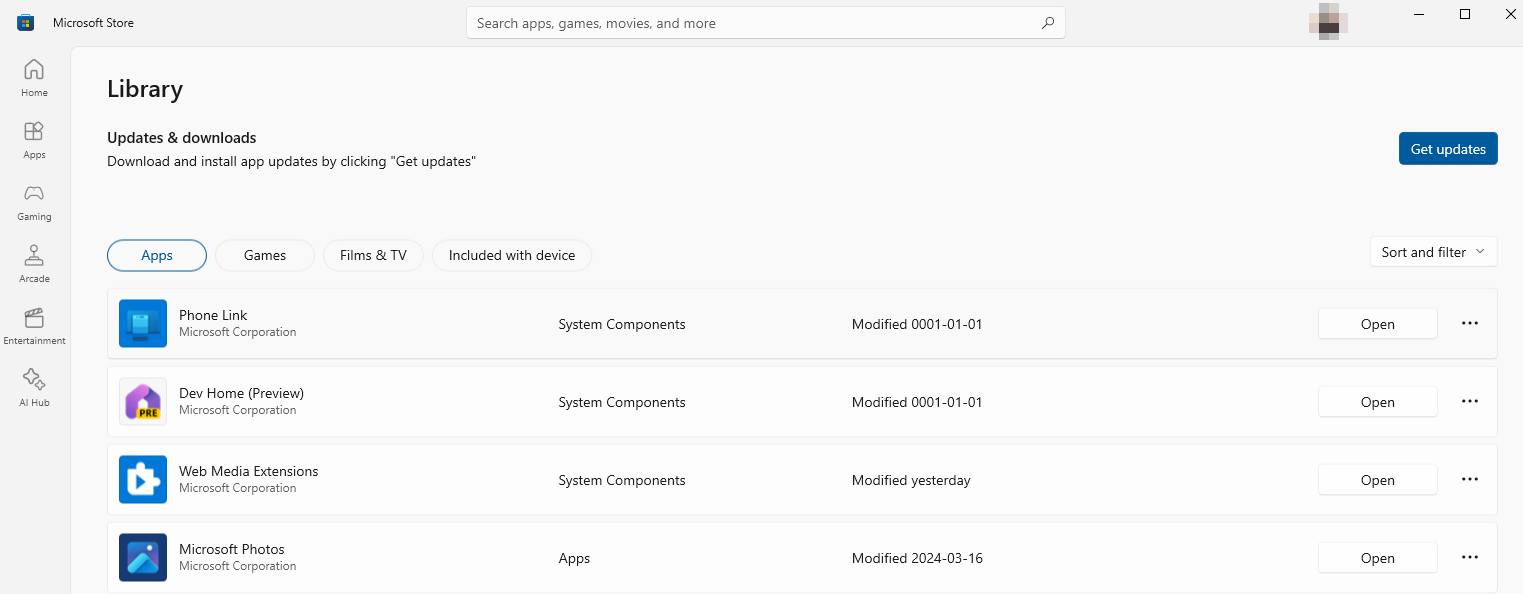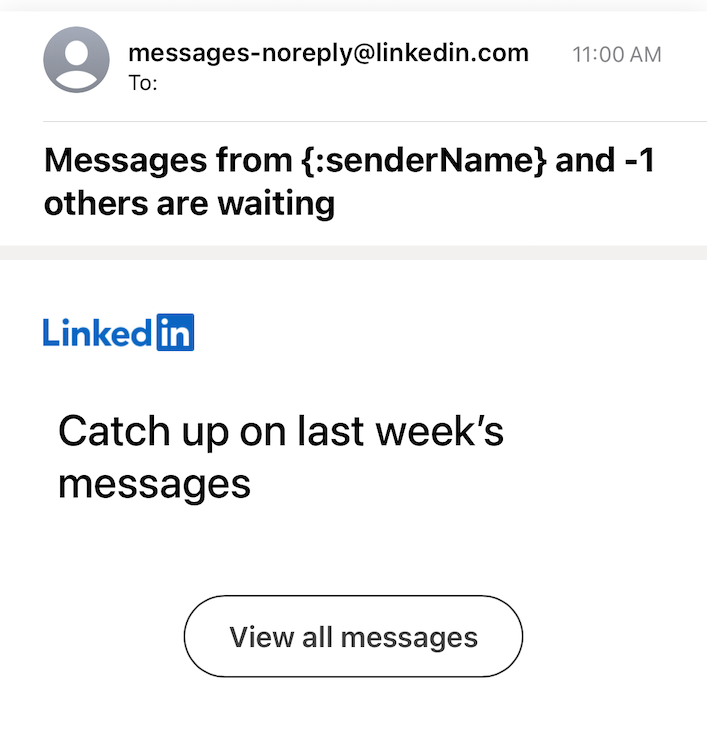Add this feed to your friends list for news aggregation, or view this feed's syndication information.
LJ.Rossia.org makes no claim to the content supplied through this journal account. Articles are retrieved via a public feed supplied by the site for this purpose.
| Tuesday, April 16th, 2024 | |
| LJ.Rossia.org makes no claim to the content supplied through this journal account. Articles are retrieved via a public feed supplied by the site for this purpose. | |
| 6:30 am | CodeSOD: A Small Partition Once upon a time, I was tuning a database performance issue. The backing database was an Oracle database, and the key problem was simply that the data needed to be partitioned. Great, easy, I wrote up a change script, applied it to a test environment, gathered some metrics to prove that it had the effects we expected, and submitted a request to apply it to production. And the DBAs came down on me like a sledgehammer. Why? Well, according to our DBAs, the license we had with Oracle didn't let us use partitioning. The feature wasn't disabled in any way, but when an Oracle compliance check was performed, we'd get dinged and they'd charge us big bucks for having used the feature- and if we wanted to enable it, it'd cost us $10,000 a year, and no one was willing to pay that. Now, I have no idea how true this actually was. I have no reason to disbelieve the DBAs I was working with, but perhaps they were being overly cautious. But the result is that I had to manually partition the data into different tables. The good news was all the writes always went into the most recent table, almost all of the reads went to either the current table or last month's table, and everything else was basically legacy and while it might be used in a report, if it was slower than the pitch drop experiment, that was fine. It was stupid, and it sucked, but it wasn't the worst sin I'd ever committed. Which is why I have at least some sympathy for this stored procedure, found by Ayende. Now, this is for an MS SQL database, which does not have any weird licensing around using partitions. But we can see here the manual partitioning in use. There are a set of Ayende got called in for this because one of the reports was running slowly. This report simply… used all of the tables. It just At the time Ayende first found it, there were 750 tables. And obviously, as each day ticked past, a new table was created. And yes, someone manually updated the view, every day. Ayende sent this to us many tables ago, and I dread to think how many tables are yet to be created. |
| Monday, April 15th, 2024 | |
| LJ.Rossia.org makes no claim to the content supplied through this journal account. Articles are retrieved via a public feed supplied by the site for this purpose. | |
| 6:30 am | CodeSOD: A Top Level Validator As oft stated, the specification governing email addresses is complicated, and isn't really well suited for regular expressions. You can get there, but honestly, most applications can get away with checking for something that looks vaguely email like and call it a day. Now, as complicated as the "accurate" regex can get, we can certainly find worse regexes for validating emails. Morgan did, while on a contract. The client side had this lovely regex for validating emails: They check a long list of TLDs to ensure that the email address is potentially valid, or accept an email address. Is the list exhaustive? Of course not. There are loads of TLDs not on this list- perhaps not widely used ones, but it's incomplete. And also, unnecessary. But not so unnecessary that they didn't do it twice- they mirrored this code on the server side, in PHP: Bad code is even better when you have to maintain it in two places and in two languages. I suppose I should just be happy that they're doing some kind of server-side validation. |
| Friday, April 12th, 2024 | |
| LJ.Rossia.org makes no claim to the content supplied through this journal account. Articles are retrieved via a public feed supplied by the site for this purpose. | |
| 6:30 am | Error'd: Paycheque There are an infinite variety of ways to be wrong, but only very small number of ways to be right. Patient Peter W. discovers that MS Word is of two minds about English usage. "Microsoft Word just can't seem to agree with itself on how to spell paycheck/pay check." Faithful readers know it's even worse than that. Slow Daniel confused me with this complaint. He writes "It seems that the eclipse has reversed the flow of time for the traffic-free travel time." I don't get it. Can readers explain? The only WTF I see here is how much faster it is to walk than to drive 2 miles. Franconia isn't Conway! Parsimonious Adam found a surprise discount. "This album was initially listed as pay-what-you-want. I tried to pay $4 for it, but the price changed to a minimum of $5 before I was able to check out, and checkout rightfully failed. My shopping cart then reverted to saying this." I want to know what happened next. Some of you dislike it when I thaw a thematic item from the deep freeze, so please note that B.J. sent us this sometime last year, noting that "Time works in mysterious ways for some companies. I earned a Verizon community 2 Year badge 36 hours after earning a 4 Year badge." I did consider saving it until July 26 this year but I'm just not that patient. By comparison, I only had to drag this entry
from the far back bottom corner of February's fridge.
|
| Thursday, April 11th, 2024 | |
| LJ.Rossia.org makes no claim to the content supplied through this journal account. Articles are retrieved via a public feed supplied by the site for this purpose. | |
| 6:30 am | CodeSOD: To Tell the Truth So many languages eschew "truth" for "truthiness". Today, we're looking at PHP's approach. PHP automatically coerces types to a boolean with some fairly simple rules:
Honestly, for PHP, this is fairly sane and reasonable. The string But we're not doing a language critique. We're looking at a very specific block of code, which Jakub inherited. You see, someone didn't like this, so they implemented their own version: I love when a code block starts with an annotation to force the linter to ignore them. Always great. We start by declaring arrays of a variety of possible true and false values. Most of the variations are in capitalization, but not exhaustive variations in capitalization, which I'm sure will cause problems at some point. But let's see how this code works. First, we check if the value is a boolean, and if so, return it. Fine, very reasonable. Second, we check if it's an integer, and if it is either 0 or 1, we cast it to a boolean and return it. In pure PHP, anything non-zero is true, but here only We then do a similar check for floats- if it's a float, it is a number, and it's either 0 or 1, we cast it to float and return it. Note, however, that they're doing a simple equality comparison- which means that floating point inputs like Finally, we check for strings, and do an Jakub has this to add:
|
| Wednesday, April 10th, 2024 | |
| LJ.Rossia.org makes no claim to the content supplied through this journal account. Articles are retrieved via a public feed supplied by the site for this purpose. | |
| 6:30 am | CodeSOD: Terminated By Nulls Strings in C are a unique collection of mistakes. The biggest one is the idea of null termination. Null termination is not without its advantages: because you're using a single byte to mark the end of the string, you can have strings of arbitrary length. No need to track the size and worry if your size variable is big enough to hold the end of the string. No complicated data structures. Just "read till you find a 0 byte, and you know you're done." Of course, this is the root of a lot of evils. Malicious inputs that lack a null terminator, for example, are a common exploit. It's so dangerous that all of the Dmitri sends us a simple example of someone not quite fully understanding this. The first line here copies the contents of The developer responsible for this is protecting against a string lacking its null terminator by using functions which absolutely require it to be null terminated. C strings are hard in the best case, but they're a lot harder when you don't understand them. |
| Tuesday, April 9th, 2024 | |
| LJ.Rossia.org makes no claim to the content supplied through this journal account. Articles are retrieved via a public feed supplied by the site for this purpose. | |
| 6:30 am | Two Pizzas for ME Gloria was a senior developer at IniMirage, a company that makes custom visualizations for their clients. Over a few years, IniMirage had grown to more than 100 people, but was still very much in startup mode. Because of that, Gloria tried to keep her teams sized for two pizzas. Thomas, the product manager, on the other hand, felt that the company was ready to make big moves, and could scale up the teams: more people could move products faster. And Thomas was her manager, so he was "setting direction." Gloria's elderly dog had spent the night at the emergency vet, and the company hadn't grown up to "giving sick days" yet, so she was nursing a headache from lack of sleep, when Thomas tried to initiate a Slack huddle. He had a habit of pushing the "Huddle" button any time the mood struct, without rhyme or reason. She put on her headphones and accepted the call. "It's Gloria. Can you hear me?" She checked her mic, and repeated the check. She waited a minute before hanging up and getting back to work. About five minutes later, Thomas called again."Hey, did you call me like 10 minutes ago?" "No, you called me." Gloria facepalmed and took a deep, calming breath. "I couldn't hear you." Thomas said, "Huh, okay. Anyway, is that demo ready for today?" Thomas loved making schedules. He usually used Excel. There was just one problem: he rarely shared them, and he rarely read them after making them. Gloria had nothing on her calendar. "What demo?" "Oh, Dylan said he was ready for a demo. So I scheduled it with Jack." Jack was the CEO. Dylan was one of Gloria's peers. Gloria checked Github, and said, "Well, Dylan hasn't pushed anything for… months. I haven't heard anything from him. Has he showed you this demo?" Gloria heard crunching. Thomas was munching on some chips. She heard him typing. After a minute, she said, "Thomas?" "Oh, sorry, I was distracted." Clearly. "Okay, I think we should cancel this meeting. I've seen this before, and with a bad demo, we could lose buy in." Thomas said, "No, no, it'll be fine." Gloria said, "Okay, well, let me know how that demo goes." She left the call and went back to work, thinking that it'd be Thomas's funeral. A few minutes before the meeting, her inbox dinged. She was now invited to the demo. She joined the meeting, only to learn that Dylan was out sick and couldn't make the meeting. She spent the time giving project updates on her work, instead of demos, which is what the CEO actually wanted anyway. The meeting ended and everyone was happy- everyone but Gloria. Gloria wrote an email to the CEO, expressing her concerns. Thomas was inattentive, incommunicative, and had left her alone to manage the team. She felt that she was doing more of the product management work than Thomas was. Jack replied that he appreciated her concerns, but that Thomas was growing into the position. Julia, one of the other product managers, popped by Gloria's desk a few weeks later. "You know Dylan?" Gloria said, "Well, I know he hasn't push any code in a literal year and keeps getting sick. I think I've pushed more code to his project than he has, and I'm not on it." Julia laughed. "Well, he's been fired, but not for that." Thomas had been pushing for more demos. Which meant he pulled Dylan into more meetings with the CEO. Jack was a "face time" person, and required everyone to turn on their webcams during meetings. It didn't take very many meetings to discover that Dylan was an entirely different person each time. There were multiple Dylans. "But even without that, HR was going to fire him for not showing up to work," Julia said. "But… if there were multiple people… why couldn't someone show up?" Gloria realized she was asking the wrong question. "How did Thomas never realize it?" And if he was multiple people, how could he never get any work done? Dylan was a two-pizza team all by himself. After the Dylan debacle, Thomas resigned suddenly and left to work at a competitor. A new product manager, Penny, came on board, and was organized, communicative, and attentive. Gloria never heard about Dylan again, and Penny kept the team sizes small. |
| Monday, April 8th, 2024 | |
| LJ.Rossia.org makes no claim to the content supplied through this journal account. Articles are retrieved via a public feed supplied by the site for this purpose. | |
| 6:30 am | CodeSOD: They Key To Dictionaries It's incredibly common to convert objects to dictionaries/maps and back, for all sorts of reasons. Jeff's co-worker was tasked with taking a dictionary which contained three keys, "mail", "telephonenumber", and "facsimiletelephonenumber" into an object representing a contact. This was their solution: Yes, we iterate across all of them to find the ones that we want. The dictionary in question is actually quite large, so we spend most of our time here looking at keys we don't care about, to find the three we do. If only there were some easier way, some efficient option for finding items in a dictionary by their name. If only we could just fetch items by their key, then we wouldn't need to have this loop. If only. |
| Friday, April 5th, 2024 | |
| LJ.Rossia.org makes no claim to the content supplied through this journal account. Articles are retrieved via a public feed supplied by the site for this purpose. | |
| 6:30 am | Error'd: Past Imperfect A twitchy anonymous reporter pointed out that our form validation code is flaky. He's not wrong. But at least it can report time without needing emoticons! :-3 That same anon sent us the following, explaining "Folks at Twitch are very brave. So brave, they wrote their own time math." Secret Agent Sjoerd reports "There was no train two minutes ago so I presume I should have caught it in an alternate universe." Denver is a key nexus in the multiverse, according to Myka. Chilly Dallin H. is a tiny bit heated about ambiguous abbreviations - or at least about the software that interprets them with inadequate context. "With a range that short, I'd hate to take one of the older generation planes." At least it might be visible! Phoney François P. "I was running a return of a phone through a big company website that shall not be named. Thankfully, they processed my order on April 1st 2024, or 2024年4月1日 in Japanese. There is a slight delay though as it shows 14月2024, which should be the 14th month of 2024. Dates are hard. Date formatting is complicated. For international date formatting, please come back later." At some time in the past, the original Adam R. encountered a time slip. We're just getting to see it even now. "GitHub must be operating on a different calendar than the Gregorian. Comments made just 4 weeks ago [today is 2023-02-07] are being displayed as made last year." |
| Thursday, April 4th, 2024 | |
| LJ.Rossia.org makes no claim to the content supplied through this journal account. Articles are retrieved via a public feed supplied by the site for this purpose. | |
| 6:30 am | CodeSOD: A Valid Applicant In the late 90s into the early 2000s, there was an entire industry spun up to get businesses and governments off their mainframe systems from the 60s and onto something modern. "Modern", in that era, usually meant Java. I attended vendor presentations, for example, that promised that you could take your mainframe, slap a SOAP webservice on it, and then gradually migrate modules off the mainframe and into Java Enterprise Edition. In the intervening years, I have seen exactly 0 successful migrations like this- usually they just end up trying that for a few years and then biting the bullet and doing a ground-up rewrite. That's is the situation ML was in: a state government wanted to replace their COBOL mainframe monster with a "maintainable" J2EE/WebSphere based application. Gone would be the 3270 dumb terminals, and here would be desktop PCs running web browsers. ML's team did the initial design work, which the state was very happy with. But the actual development work gave the state sticker shock, so they opted to take the design from ML's company and ship it out to a lowest-bidder offshore vendor to actually do the development work. This, by the way, was another popular mindset in the early 00s: you could design your software as a set of UML diagrams and then hand them off to the cheapest coder you could hire, and voila, you'd have working software (and someday soon, you'd be able to just generate the code and wouldn't need the programmer in the first place! ANY DAY NOW). Now, this code is old, and predates generics in Java, so the use of Here you see an To do this, we iterate across our list of applications (which, it's worth noting, are being treated as All of this is unnecessary, and demonstrates a lack of understanding about the language in use. This block could be written more clearly as: This gives us the same result with significantly less effort. While much of the code coming from the offshore team was actually solid, it contained so much nonsense like this, so many misundertandings of the design, and so many bugs, that the state kept coming back to ML's company to address the issues. Between paying the offshore team to do the work, and then ML's team to fix the work, the entire project cost much more than if they had hired ML's team in the first place. But the developers still billed at a lower rate than ML's team, which meant the managers responsible still got to brag about cost savings, even as they overran the project budget. "Imagine how much it would have cost if we hadn't gone with the cheaper labor?" |
| Wednesday, April 3rd, 2024 | |
| LJ.Rossia.org makes no claim to the content supplied through this journal account. Articles are retrieved via a public feed supplied by the site for this purpose. | |
| 6:30 am | CodeSOD: Gotta Catch 'Em All It's good to handle any exception that could be raised in some useful way. Frequently, this means that you need to take advantage of the Well, I guess that if they ever need to add different code paths, they're halfway there. |
| Tuesday, April 2nd, 2024 | |
| LJ.Rossia.org makes no claim to the content supplied through this journal account. Articles are retrieved via a public feed supplied by the site for this purpose. | |
| 6:30 am | CodeSOD: Exceptional Feeds Joe sends us some Visual Basic .NET exception handling. Let's see if you can spot what's wrong? This code catches the generic exception, meddles with the cursor a bit, and then pops up a message box to alert the user to something that went wrong. I don't love putting the raw exception in the message box, but this is hardly a WTF, is it? Elsewhere in the application. Okay, I also don't love the Well, the fact that they're initializing an RSS feed is a hint- this isn't an RSS reader client, it's an RSS serving web app. This runs on the server side, and any message boxes that get popped up aren't going to the end user. Now, I haven't seen this precise thing done in VB .Net, only in Classic ASP, where you could absolutely open message boxes on the web server. I'd hope that in ASP .Net, something would stop you from doing that. I'd hope. Otherwise, I've found the worst logging system you could make. |
| Monday, April 1st, 2024 | |
| LJ.Rossia.org makes no claim to the content supplied through this journal account. Articles are retrieved via a public feed supplied by the site for this purpose. | |
| 6:30 am | Taking Up Space April Fool's day is a day where websites lie to you or create complex pranks. We've generally avoided the former, but have done a few of the latter, but we also like to just use April Fool's as a chance to change things up. So today, we're going to do something different. We're going to talk about my Day Job. Specifically, we're going to talk about a tool I use in my day job: cFS. cFS is a NASA-designed architecture for designing spaceflight applications. It's open source, and designed to be accessible. A lot of the missions NASA launches use cFS, which gives it a lovely proven track record. And it was designed and built by people much smarter than me. Which doesn't mean it's free of WTFs. The Big PicturecFS is a C framework for spaceflight, designed to run on real-time OSes, though fully capable of running on Linux (with or without a realtime kernel), and even Windows. It has three core modules- a Core Flight Executive (cFE) (which provides services around task management, and cross-task communication), the OS Abstraction Layer (helping your code be portable across OSes), and a Platform Support Package (low-level support for board-connected hardware). Its core concept is that you build "apps", and the whole thing has a pitch about an app store. We'll come back to that. What exactly is an app in cFS? Well, at their core, "apps" are just Actors. They're a block of code with its own internal state, that interacts with other modules via message passing, but basically runs as its own thread (or a realtime task, or whatever your OS appropriate abstraction is). These applications are wired together by a cFS feature called the "Core Flight Executive Software Bus" (cFE Software Bus, or just Software Bus), which handles managing subscriptions and routing. Under the hood, this leverages an OS-level message queue abstraction. Since each "app" has its own internal memory, and only reacts to messages (or emits messages for others to react to), we avoid pretty much all of the main pitfalls of concurrency. This all feeds into the single responsibility principle, giving each "app" one job to do. And while we're throwing around buzzwords, it also grants us encapsulation (each "app" has its own memory space, unshared), and helps us design around interfaces- "apps" emit and receive certain messages, which defines their interface. It's almost like full object oriented programming in C, or something like how the BeamVM languages (Erlang, Elixir) work. The other benefit of this is that we can have reusable apps which provide common functionality that every mission needs. For example, the app All in all, cFS constitutes a robust, well-tested framework for designing spaceflight applications. Even NASA annoys meThis is TDWTF, however, so none of this is all sunshine and roses. cFS is not the prettiest framework, and the developer experience may ah… leave a lot to be desired. It's always undergoing constant improvement, which is good, but still has its pain points. Speaking of constant improvement, let's talk about versioning. cFS is the core flight software framework which hosts your apps (via the cFE), and cFS is getting new versions. The apps themselves also get new versions. The people writing the apps and the people writing cFS are not always coordinating on this, which means that when cFS adds a breaking change to their API, you get to play the "which version of cFS and App X play nice together". And since everyone has different practices around tagging releases, you often have to walk through commits to find the last version of the app that was compatible with your version of cFS, and see things like releases tagged "compatible with Draco rc2 (mostly)". The goal of "grab apps from an App Store and they just work" is definitely not actually happening. Or, this, from the current cFS readme:
Messages in cFS are represented by Messages also have to have a unique "Message ID", but the MID is not just an arbitrary unique number. It secretly encodes important information, like whether this message is a command (an instruction to take action) or telemetry (data being output), and if you pick a bad MID, everything breaks. Also, keeping MID definitions unique across many different apps who don't know any of the other apps exist is a huge problem. The general solution that folks use is bolting on some sort of CSV file and code generator that handles this. Those MIDs also don't exist outside of cFS- they're a unique-to-cFS abstraction. cFS, behind the scenes, converts them to different parts of the "space packet header", which is the primary packet format for the SpaceWire networking protocol. This means that in realistic deployments where your cFS module needs to talk to components not running cFS- your MID also represents key header fields for the SpaceWire network. It's incredibly overloaded and the conversions are hidden behind C macros that you can't easily debug. But my biggest gripe is the build tooling. Everyone at work knows they can send me climbing the walls by just whispering "cFS builds" in my ear. It's a nightmare (that, I believe has gotten better in newer versions, but due to the whole "no synchronization between app and cFE versions" problem, we're not using a new version). It starts with Oh, speaking of unit testing- cFS provides mocks of all of its internal functions; mocks which always return an error code. This is intentional, to encourage developers to test their failure paths in code, but I also like to test our success path too. SummaryAny tool you use on a regular basis is going to be a tool that you're intimately familiar with; the good parts frequently vanish into the background and the pain points are the things that you notice, day in, day out. That's definitely how I feel after working with cFS for two years. I think, at its core, the programming concepts it brings to doing low-level, embedded C, are good. It's certainly better than needing to write this architecture myself. And for all its warts, it's been designed and developed by people who are extremely safety conscious and expect you to be too. It's been used on many missions, from hobbyist cube sats to Mars rovers, and that proven track record gives you a good degree of confidence that your mission will also be safe using it. And since it is Open Source, you can try it out yourself. The cFS-101 guide gives you a good starting point, complete with a downloadable VM that walks you through building a cFS application and communicating with it from simulated ground software. It's a very different way to approach C programming (and makes it easier to comply with C standards, like MISRA), and honestly, the Actor-oriented mindset is a good attitude to bring to many different architectural problems. PeregrineIf you were following space news at all, you may already know that our Peregrine lander failed. I can't really say anything about that until the formal review has released its findings, but all indications are that it was very much a hardware problem involving valves and high pressure tanks. But I can say that most of the avionics on it were connected to some sort of cFS instance (there were several cFS nodes). |
| Friday, March 29th, 2024 | |
| LJ.Rossia.org makes no claim to the content supplied through this journal account. Articles are retrieved via a public feed supplied by the site for this purpose. | |
| 6:30 am | Error'd: Good Enough Friday We've got some of the rarer classic Error'd types today: events from the dawn of time, weird definitions of space, and this absolutely astonishing choice of cancel/confirm button text. Perplexed Stewart found this and it's got me completely befuddled as well! "Puzzled over this classic type of Error'd for ages. I really have no clue whether I should press Yes or No." I have a feeling we've seen errors like this before, but it bears repeating. Samuel H. bemoans the awful irony. "While updating Adobe Reader: Adobe Crash Processor quit unexpectedly [a.k.a. crashed]." Cosmopolitan Jan B. might be looking for a courier to carry something abroad. "I found an eBay listing that seemed too good to be true, but had no bids at all! The item even ships worldwide, except they have a very narrow definition of what worldwide means." Super-Patriot Chris A. proves Tennessee will take second place to nobody when it comes to distrusting dirty furriners. Especially the ones in Kentucky. "The best country to block is one's own. That way, you KNOW no foreigners can read your public documents!" Finally, old-timer Bruce R. has a system that appears to have been directly inspired by Aristotle. "I know Windows has some old code in it, but this is ridiculous." |
| Thursday, March 28th, 2024 | |
| LJ.Rossia.org makes no claim to the content supplied through this journal account. Articles are retrieved via a public feed supplied by the site for this purpose. | |
| 6:30 am | CodeSOD: Sorts of Dates We've seen loads of bad date handling, but as always, there's new ways to be surprised by the bizarre inventions people come up with. Today, Tim sends us some bad date sorting, in PHP. The The "date" field in our records is a string. It's a string formatted in But being useless isn't the end of it. We convert the string time into a Unix timestamp with Elsewhere in the code, we use Unrelated to this code, but a PHP weirdness, we pass the callable Now, a moment ago, I said that we knew the format of the inputs. That's a bold claim, especially for such a generically named function, but it's important: this function is used to sort the results of a database query. That's how we know the format of the dates- the input comes directly from a query. A query that could easily be modified to include an And in fact, someone had made that modification to the query, meaning that the data was already sorted before being passed to the |
| Wednesday, March 27th, 2024 | |
| LJ.Rossia.org makes no claim to the content supplied through this journal account. Articles are retrieved via a public feed supplied by the site for this purpose. | |
| 6:30 am | CodeSOD: Never Retire We all know that 2038 is going to be a big year. In a mere 14 years, a bunch of devices are going to have problems. Less known is the Y2030 problem, which is what Ventsislav fighting to protect us from. Okay, likely less critical than Y2038, but this code, as you might guess, started its life in the year 2000. Clearly, no one thought it'd still be in use this far out, yet… it is. It's also worth noting that the drop down list object in .NET has a With six years to go, do you think this application is going to be replaced, or is the I mean, they could also change it so it always goes to |
| Tuesday, March 26th, 2024 | |
| LJ.Rossia.org makes no claim to the content supplied through this journal account. Articles are retrieved via a public feed supplied by the site for this purpose. | |
| 6:30 am | CodeSOD: Exceptional String Comparisons As a general rule, I will actually prefer code that is verbose and clear over code that is concise but makes me think. I really don't like to think if I don't have to. Of course, there's the class of WTF code that is verbose, unclear and also really bad, which Thomas sends us today: This VB .Net function could easily be replaced with Speaking of not doing anything useful, there are a few other pieces of bloat in this function. First, we plop our input parameters into the variables But the real special magic in this one is the What's notable in this case, is that every function was implemented this way. Every function had a Try/Catch that frequently did nothing, or rarely (usually when they copy/pasted from StackOverflow) printed out the error message, but otherwise just let the program continue. And that's the real WTF: a codebase polluted with so many do-nothing exception handlers that exceptions become absolutely worthless. Errors in the program let it continue, and the users experience bizarre, inconsistent states as the application fails silently. Or, to put it another way: this is the .NET equivalent of classic VB's |
| Monday, March 25th, 2024 | |
| LJ.Rossia.org makes no claim to the content supplied through this journal account. Articles are retrieved via a public feed supplied by the site for this purpose. | |
| 6:30 am | CodeSOD: Contains a Substring One of the perks of open source software is that it means that large companies can and will patch it for their needs. Which means we can see what a particular large electronics vendor did with a video player application. For example, they needed to see if the URL pointed to a stream protected by WideVine, Vudu, or Netflix. They can do this by checking if the filename contains a certain substring. Let's see how they accomplished this… For starters, there's been a lot of discussion around the importance of memory safe languages lately. I would argue that in C/C++ it's not actually hard to write memory safe code, it's just very easy not to. And this is an example- everything in here is a buffer overrun waiting to happen. The core problem is that we're passing pure pointers to But also, let's talk about that string comparison. They don't even just loop across a pair of strings character by character, they use this bizarre set of nested It's also worth noting that, since this is a read-only operation, the |
| Friday, March 22nd, 2024 | |
| LJ.Rossia.org makes no claim to the content supplied through this journal account. Articles are retrieved via a public feed supplied by the site for this purpose. | |
| 6:30 am | Error'd: You Can Say That Again! In a first for me, this week we got FIVE unique submissions of the exact same bug on LinkedIn. In the spirit of the theme, I dug up a couple of unused submissions of older problems at LinkedIn as well. I guess there are more than the usual number of tech people looking for jobs. John S., Chris K., Peter C., Brett Nash and Piotr K. all sent in samples of this doublebug. It's a flubstitution AND bad math, together! Latin Steevie is also job hunting and commented "Well, I know tech-writers may face hard times finding a job, so they turn to LinkedIn, which however doesn't seem to help... (the second announcement translates to 'part-time cleaners wanted') As a side bonus, apparently I can't try a search for jobs outside Italy, which is quite odd, to say the least!" Clever Drew W. found a very minor bug in their handling of non-ASCII names. "I have an emoji in my display name on LinkedIn to thwart scrapers and other such bots. I didn't think it would also thwart LinkedIn!" Finally, Mark Whybird returns with an internal repetition. "I think maybe I found the cause of some repetitive notifications when I went to Linkedin's notifications preferences page?" I think maybe! |
| Thursday, March 21st, 2024 | |
| LJ.Rossia.org makes no claim to the content supplied through this journal account. Articles are retrieved via a public feed supplied by the site for this purpose. | |
| 6:30 am | CodeSOD: Reading is a Safe Operation Alex saw, in the company's codebase, a method called Fortunately for Alex, they checked the code before blindly calling the method. This is a recursive delete. This code is clearly cribbed from comments on the PHP documentation, with a fun difference in that this version is both unclearly named, and also throws an extra Alex learned to take nothing for granted in this code base. |
| Wednesday, March 20th, 2024 | |
| LJ.Rossia.org makes no claim to the content supplied through this journal account. Articles are retrieved via a public feed supplied by the site for this purpose. | |
| 6:30 am | CodeSOD: Do you like this page? Check [Yes] or [No] In the far-off era of the late-90s, Jens worked for a small software shop that built tools for enterprise customers. It was a small shop, and most of the projects were fairly small- usually enough for one developer to see through to completion. A co-worker built a VB4 (the latest version available) tool that interfaced with an Oracle database. That co-worker quit, and that meant this tool was Jens's job. The fact that Jens had never touched Visual Basic before meant nothing. With the original developer gone, Jens had to go back to the customer for some knowledge transfer. "Walk me through how you use the application?" "The main thing we do is print reports," the user said. They navigated through a few screens worth of menus to the report, and got a preview of it. It was a simple report with five records displayed on each page. The user hit "Print", and then a dialog box appeared: "Wait, is this how this works?" Jens asked, not believing his eyes. "Yes, it's great because we can decide which pages we want to print," the user said.
With each page, the dialog box took longer and longer to appear, the program apparently bogging down. Now, the code is long lost, and Jens quickly forgot everything they learned about VB4 once this project was over (fair), so instead of a pure code sample, we have here a little pseudocode to demonstrate the flow:
The core thrust is that we query the number of pages each time we run the loop. Then we get all of the rows for the report, and check each row to see if they're supposed to be on the page we're printing. If they are, "Why doesn't it just give you a page selector, like Word does?" Jens asked. "The last guy said that wasn't possible."
Jens, ignorant of VB, worried that he stepped on a land-mine and had just promised the customer something the tool didn't support. He walked the statement back and said, "I'll look into it, to see if we can't make it better." It wasn't hard for Jens to make it better: not re-running the query for each page and not iterating across the rows of previous pages on every page boosted performance.
Adding a word-processor-style page selector wasn't much harder. If not for that change, that poor user might be clicking "No" to this very day.
|
LJ.Rossia.org makes no claim to the content supplied through this journal account. Articles are retrieved via a public feed supplied by the site for this purpose.
